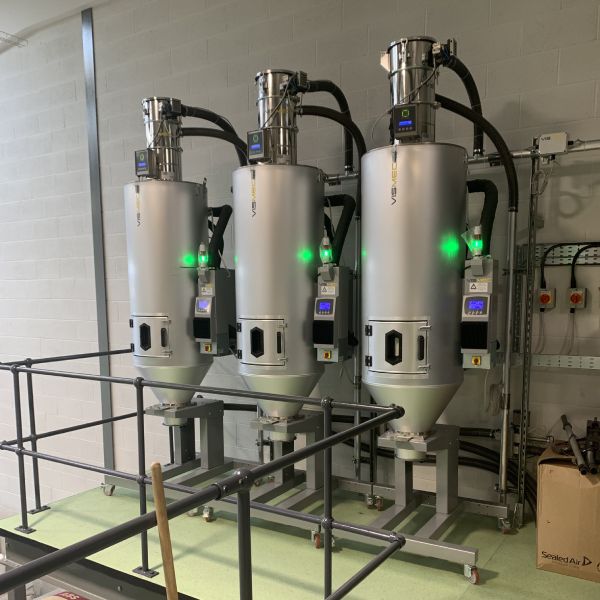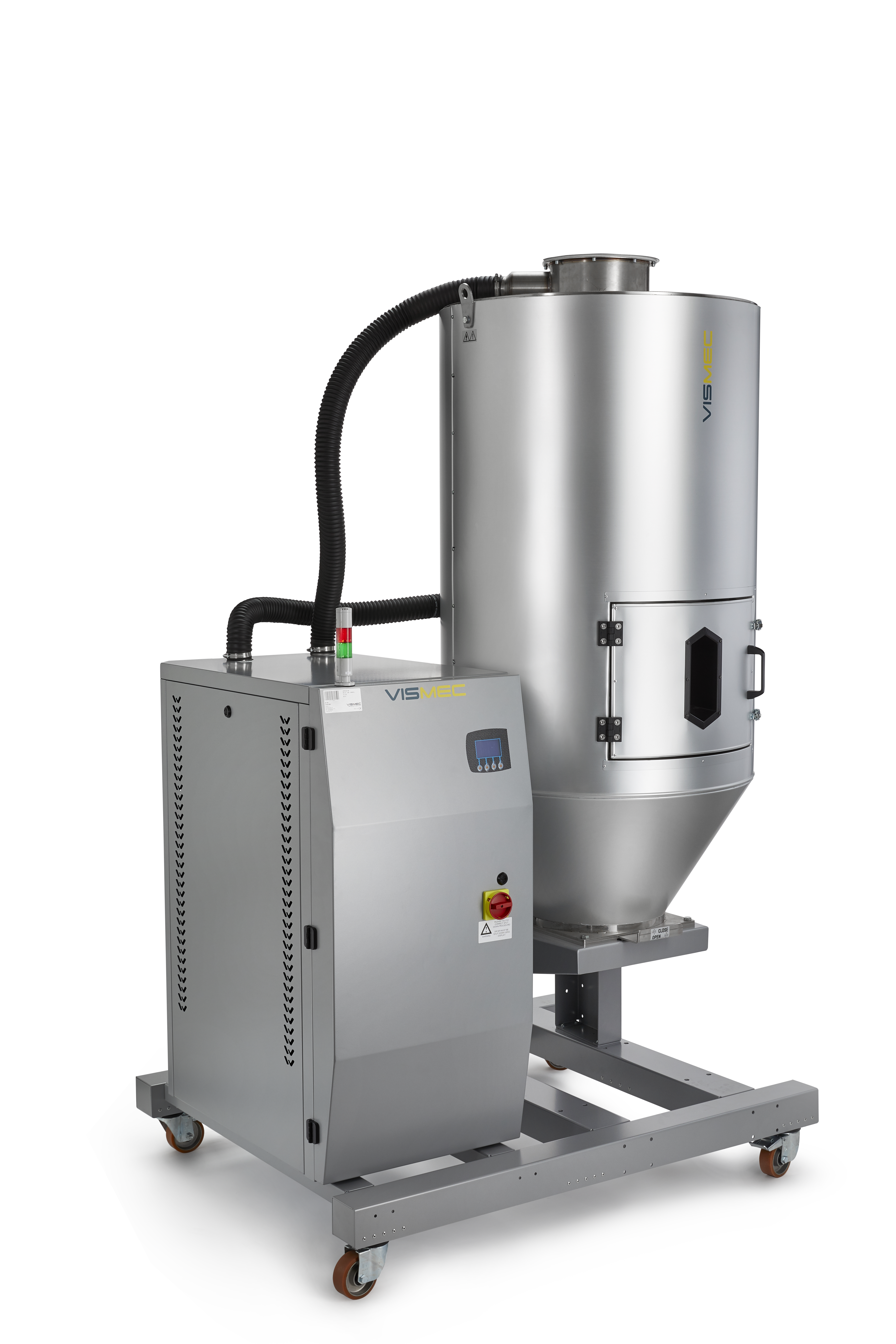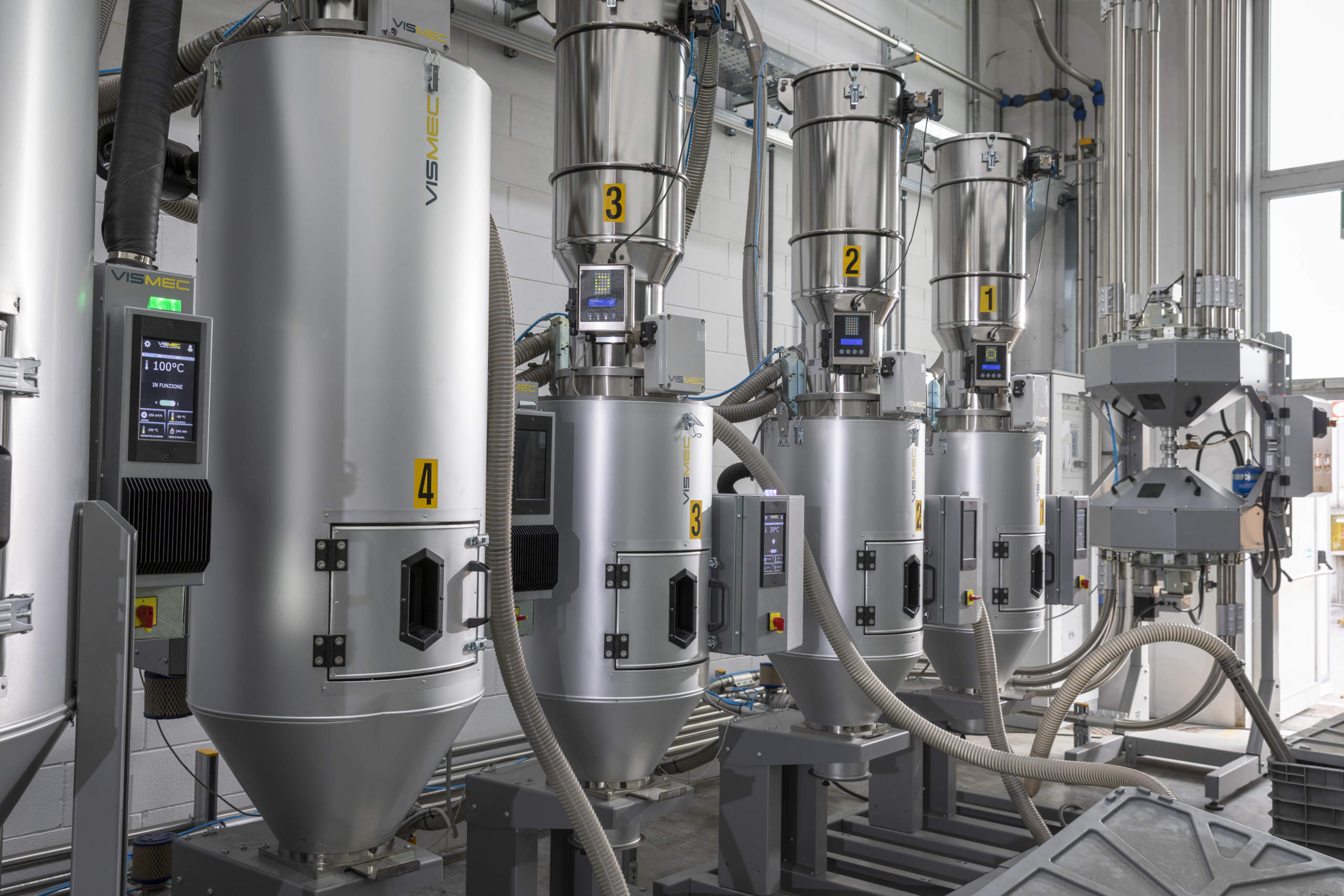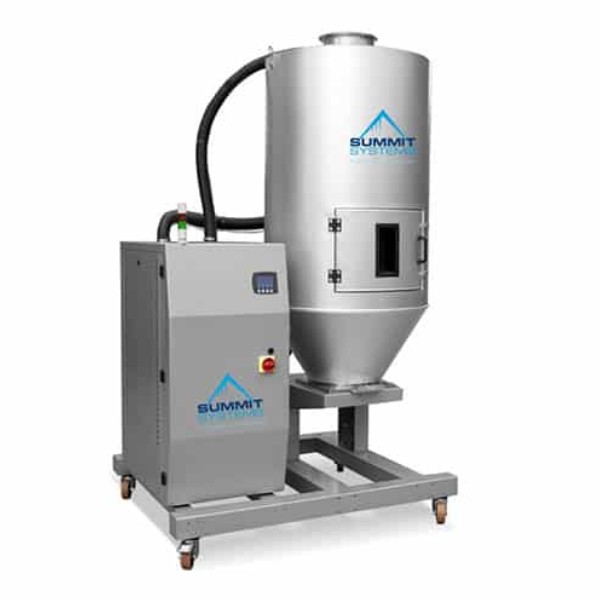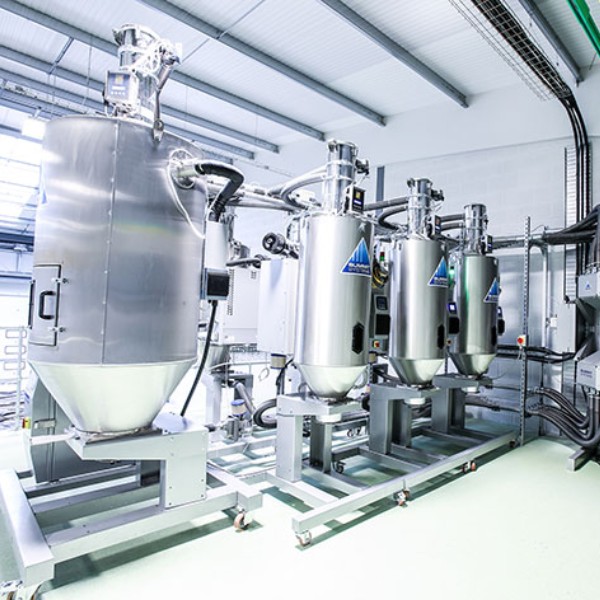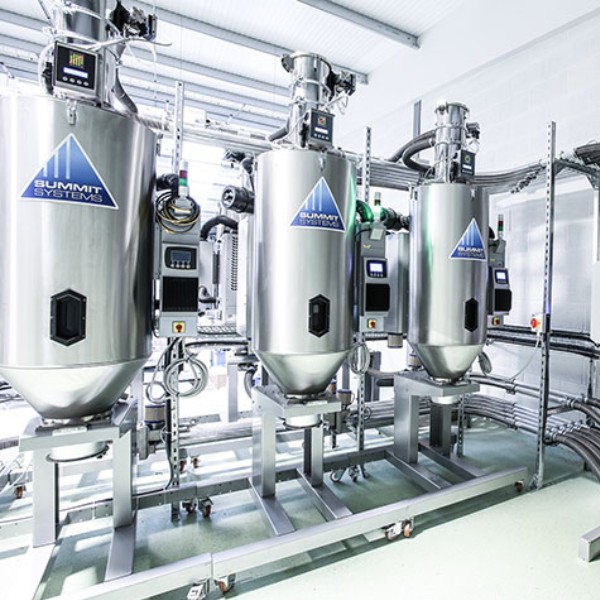Rotor Wheel Dryers
Product Highlights
The Low Energy Rotor Wheel Dryers from VISMEC are a superb machine for the general drying of all hygroscopic materials utilising the latest technology. Its honeycomb technology guarantees 40% consumption saving when compared to traditional twin tower desiccant dryers. Models are available for installation on or next to the drying hopper.
Highly efficient with a minimum of 40% energy saving, self-adjusting throughput, and material protection features.
Both models, Drywell and Dryplus, require no compressed air or cooling water to dry the material, with drying temperatures up to 180°C. Smart mode provides automatic adaption of the drying process to the production needs by monitoring the return air temperature, saving energy, and the MPM (material protection management) protects the material from over drying and degradation by monitoring the loading system and the return air temperature.
